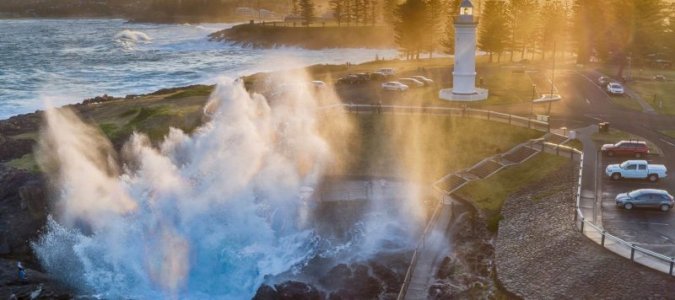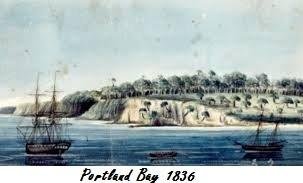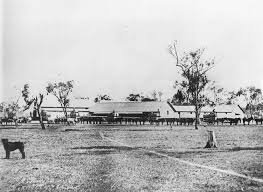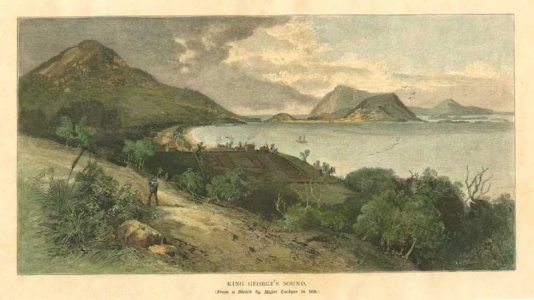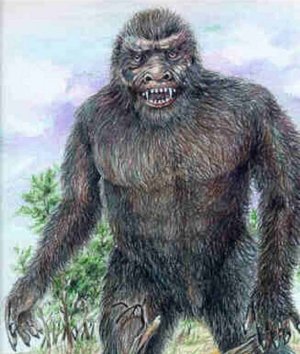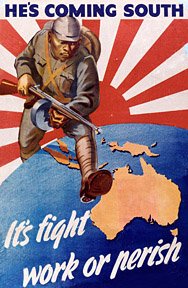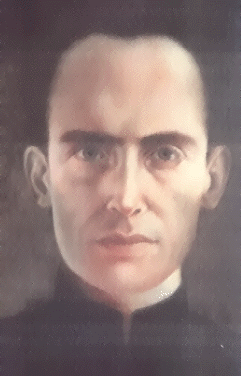Australian History
Monday, December 13, 1802. : Charles Robbins successfully dissuades the French from making a claim on Van Diemen's land (now Tasmania).
Tasmania was first discovered by Abel Tasman on 24 November 1642. Tasman discovered the previously unknown island on his voyage past the "Great South Land", or "New Holland", as the Dutch called Australia. He named it "Antony Van Diemen's Land" in honour of the High Magistrate, or Governor-General of Batavia.
When the First Fleet arrived in 1788, Captain Arthur Phillip claimed the entire eastern coast for the British Empire, including Tasmania, though it was not yet proven to be separate from the mainland. In January 1799 Bass and Flinders completed their circumnavigation of Tasmania, proving it to be an island.
The British were keen to make a formal claim upon the island so that it would not come under the control of France. In November 1802, Governor King sent Charles Robbins, first mate of HMS Buffalo, to Van Diemen's land with the purpose of dissuading an impending French claim. In an earlier moment of indiscretion, French commodore Nicolas Baudin had revealed his intention to colonise Van Diemen's Land. Robbins sailed the schooner 'Cumberland', the only ship available at the time, arriving in Van Diemen's Land on 13 December 1802. He met Baudin and successfully persuaded Baudin to abandon his plans to claim Van Diemen's Land. Robbins's claim to Van Diemen's Land was reinforced by the landing of British troops on King Island in Bass Strait shortly afterwards.
Robbins himself found Robbins Island, a small island off the northwest coast of Van Diemen's Land, in 1804. It was subsequently named in his honour.
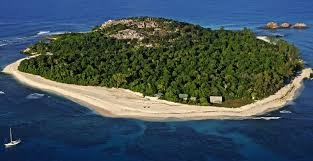 Friday, December 13, 1850. : Cleveland in southeast Queensland is proclaimed a township.
Friday, December 13, 1850. : Cleveland in southeast Queensland is proclaimed a township.
Cleveland is a suburb of Redland City, which lies sandwiched between the boundaries of Brisbane and the Gold Coast in southeast Queensland. Originally known as Nandeebie by the indigenous Koobenpul people, the area was first settled by Europeans in the 1820s, after being discovered by ticket-of-leave convicts Parsons, Pamphlett and Finnegan who had been blown off-course by a wild storm near the Illawarra coast of NSW. Believing they were south of Port Jackson, the men headed north, where they reached Moreton Bay and island-hopped to the mainland. Here, near the Brisbane River, they were eventually rescued by explorer John Oxley who was surveying the area as the site for a possible penal settlement. Redcliffe became the first settlement in the new Colony of the Moreton Bay District, followed by Brisbane, named after the Brisbane River, which in turn was named after Governor Brisbane, then the Governor of New South Wales.
Settlement south of Brisbane began with farming allotments, as the area was rich in volcanic soil. Cleveland, still known as Emu Point, was an important port for small boats in the region, and a strong contender for being a future capital city whenever the colony separated from New South Wales. This was quashed in 1842 when Governor Gipps attempted to come ashore at Emu Point and ended up floundering in the mud and mangroves because his ship was too large to dock. The bay proved to be too shallow to be a major port in the future. The area was renamed Cleveland by surveyors, in honour of William Vane, the 1st Duke of Cleveland.
On 13 December 1850, Cleveland was proclaimed a township, and soon became a popular seaside resort. Two buildings from the 1850s, the Courthouse (now a restaurant) and the Grand View Hotel, still remain as testimony to Cleveland’s heritage.
Monday, December 13, 1858. :The first balloon flight in Sydney, Australia, takes place.
The hot air balloon was developed in the 1700s by Frenchman Jacques Étienne Montgolfier, together with his brother Joseph-Michel. Montgolfier progressed to untethered flights until 1783 when he tested the first balloon to carry passengers, using a duck, a sheep and a rooster as his subjects. The demonstration occurred in Paris and was witnessed by King Louis XVI. The first manned, untethered balloon flight occurred on November 21 of that year, and carried two men.
The first balloon flight in Australia occurred on 1 February 1858. Constructed in the UK, the balloon was imported into Australia by the manager of Melbourne's Theatre Royal, George Coppin. The launch took place at Cremorne Gardens near Richmond. William Dean lifted off at 5:52pm and landed near Heidelberg at around 6:30pm. Two weeks later, Dean again lifted off, this time reaching an estimated altitude of 10,000 feet before decending onto the road between Collingwood and Brunswick Stockade.
William Dean was also the first to fly in a balloon from Sydney. Together with his companion, Brown, they launched at 5:00pm on 13 December 1858, witnessed by 7,000 people. The balloon drifted north across Sydney Harbour and landed in Neutral Bay. However, it was not until the 1870s that balloon flights became more commonplace in Australia.
Tuesday, December 13, 1955. : Australian housewife "superstar", Dame Edna Everage, makes her stage debut.
Dame Edna Everage is the brainchild and ostentatious alter-ego of Australian actor Barry Humphries. The Moonee Ponds housewife, originally created as a parody of Australian suburban insularity, has developed from her earlier dowdiness to become a satire of stardom, the gaudily dressed, ostentatious, international Housewife Gigastar with outrageous glasses.
Barry Humphries was born on 17 February 1934 in Melbourne, Australia. He studied law, philosophy and fine arts at Melbourne University before joining the Melbourne Theatre Group and embarking on an acting career. He created the character of Edna Everage who made her Australian debut at Melbourne's Union theatre on 13 December 1955. Humphries brought her to the British stage in 1969 for his one-man show, "Just a Show". In 1970 Barry returned to Australia, where Edna Everage made her movie debut in John B Murray's The Naked Bunyip.
Humphries has ensured his creation has kept up with the latest technology. Dame Edna now has her own website, dame-edna.com, where fans can find the latest tour dates, merchandise and information about Australia's favourite housewife.
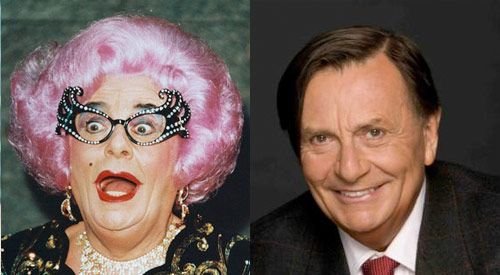 Saturday, December 13, 1975. : Malcolm Fraser's Liberal Party wins a landslide 55-seat majority victory over the ALP.
Saturday, December 13, 1975. : Malcolm Fraser's Liberal Party wins a landslide 55-seat majority victory over the ALP.
Edward Gough Whitlam, elected in 1972 to be the 21st Prime Minister of Australia, had embarked on a massive legislative social reform program which was forward-thinking and progressive in many ways. Whilst initially popular, the fast pace of reform engendered caution amongst the electorate, and the economy was beset by high inflation combined with economic stagnation.
These conditions were the catalyst to the Australian constitutional crisis of 1975. The opposition Liberal-National Country Party coalition held a majority in the Senate, the upper house of Parliament. In an unprecedented move, the Senate deferred voting on bills that appropriated funds for government expenditure, attempting to force the Prime Minister to dissolve the House of Representatives and call an election. The Whitlam government ignored the warnings, and sought alternative means of appropriating the funds it needed to repay huge debts. With Whitlam unable to secure the necessary funds, the Governor-General, Sir John Kerr, dismissed Whitlam as Prime Minister on 11 November 1975, and appointed Liberal opposition leader Malcolm Fraser as caretaker Prime Minister.
This was done on the condition that Fraser would seek a dissolution of both the House of Representatives and the Senate, thus precipitating a general election. Formal elections were held on 13 December 1975, and Fraser's Liberal Party won a massive 55-seat majority victory over the Australian Labor Party.
New Zealand History
Saturday, December 13, 1642. : Dutch explorer Abel Tasman discovers New Zealand.
Abel Janszoon Tasman was a Dutch seafarer and explorer born in 1603 in the village of Lutjegast, Netherlands. In 1634 Tasman joined the Dutch East India Company and, after gaining further experience and promotions, was ordered to explore the south-east waters in order to find a new sea trade route to Chile in South America. On 24 November 1642, he discovered a previously unknown island on his voyage past the "Great South Land", or "New Holland", as the Dutch called Australia. He named the island "Antony Van Diemen's Land" in honour of the High Magistrate, or Governor-General of Batavia.
Tasman did not try to circumnavigate the island, but continued to sail east. On 13 December 1642, Tasman sighted a new land which he described as mountainous and covered in cloud in the south, but more barren in the north. He had discovered New Zealand. However, he also did not choose to explore further, assuming that the two lands were part of a larger continent. This fallacy persisted until James Cook explored the South Pacific, circumnavigated the two main islands of New Zealand, and then charted the eastern coast of the Australian continent.


